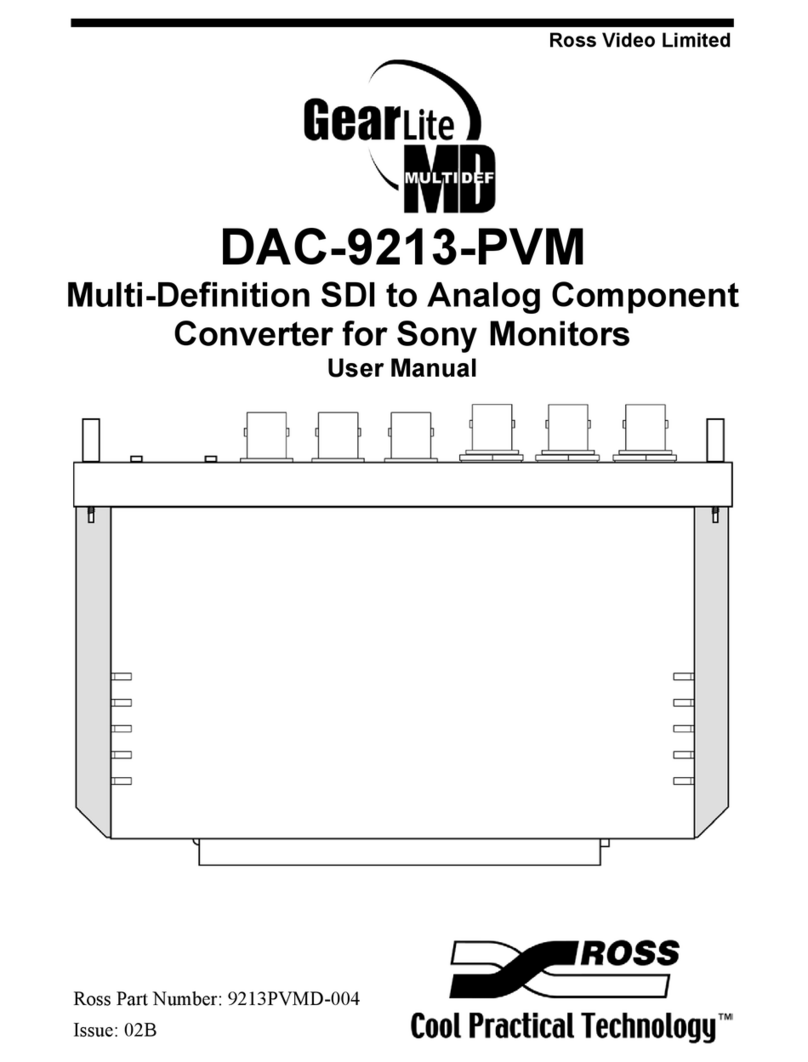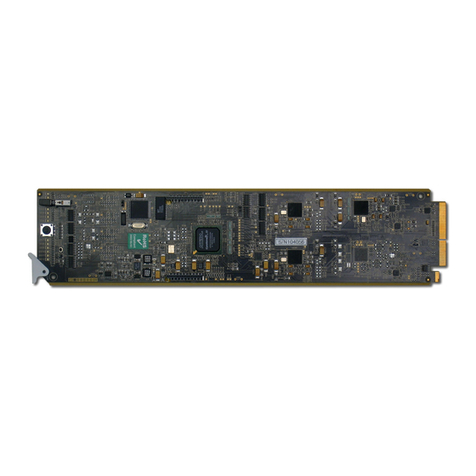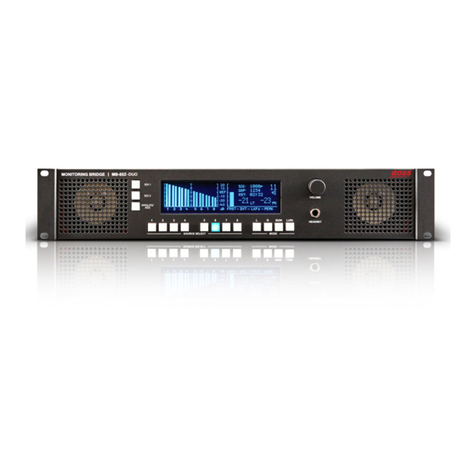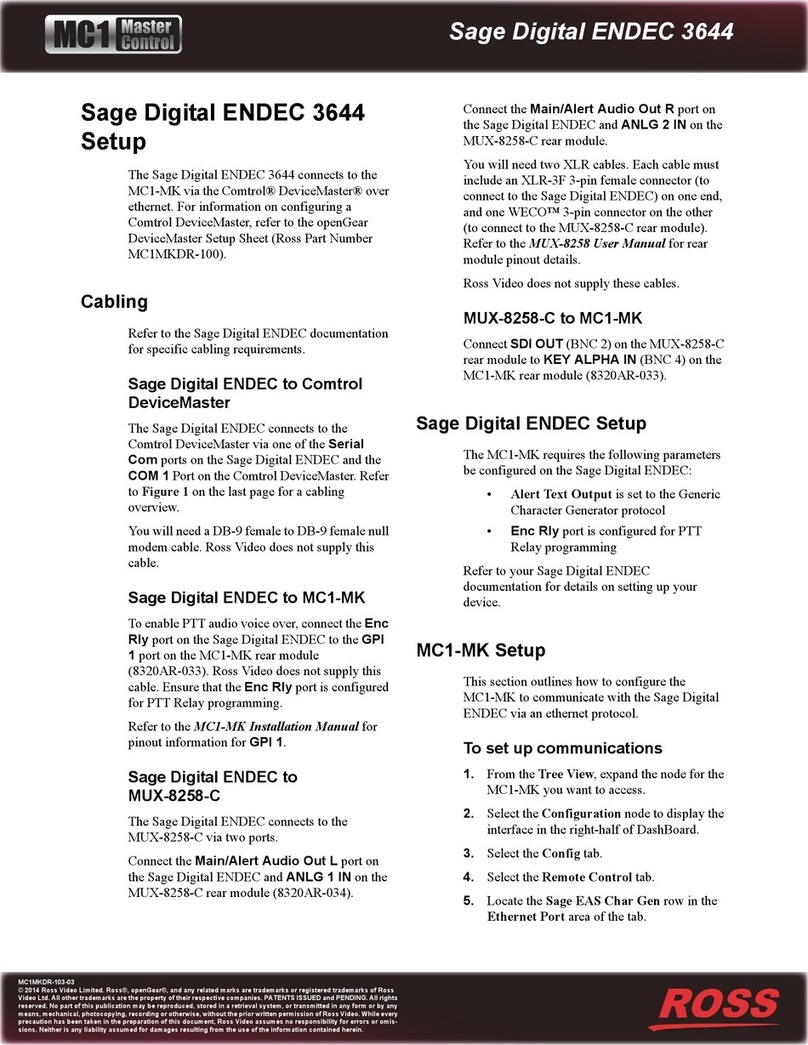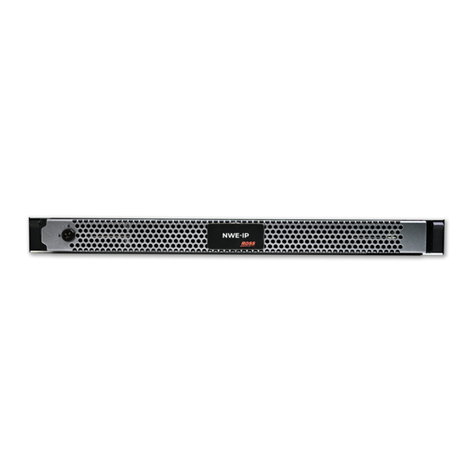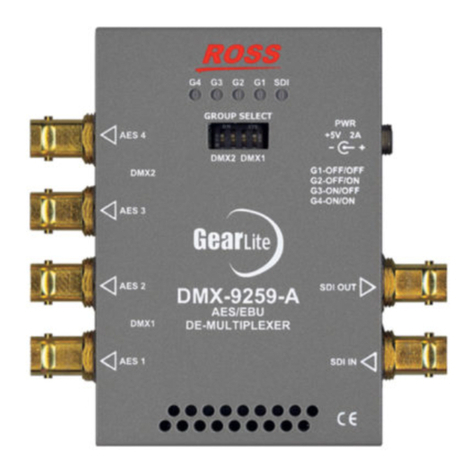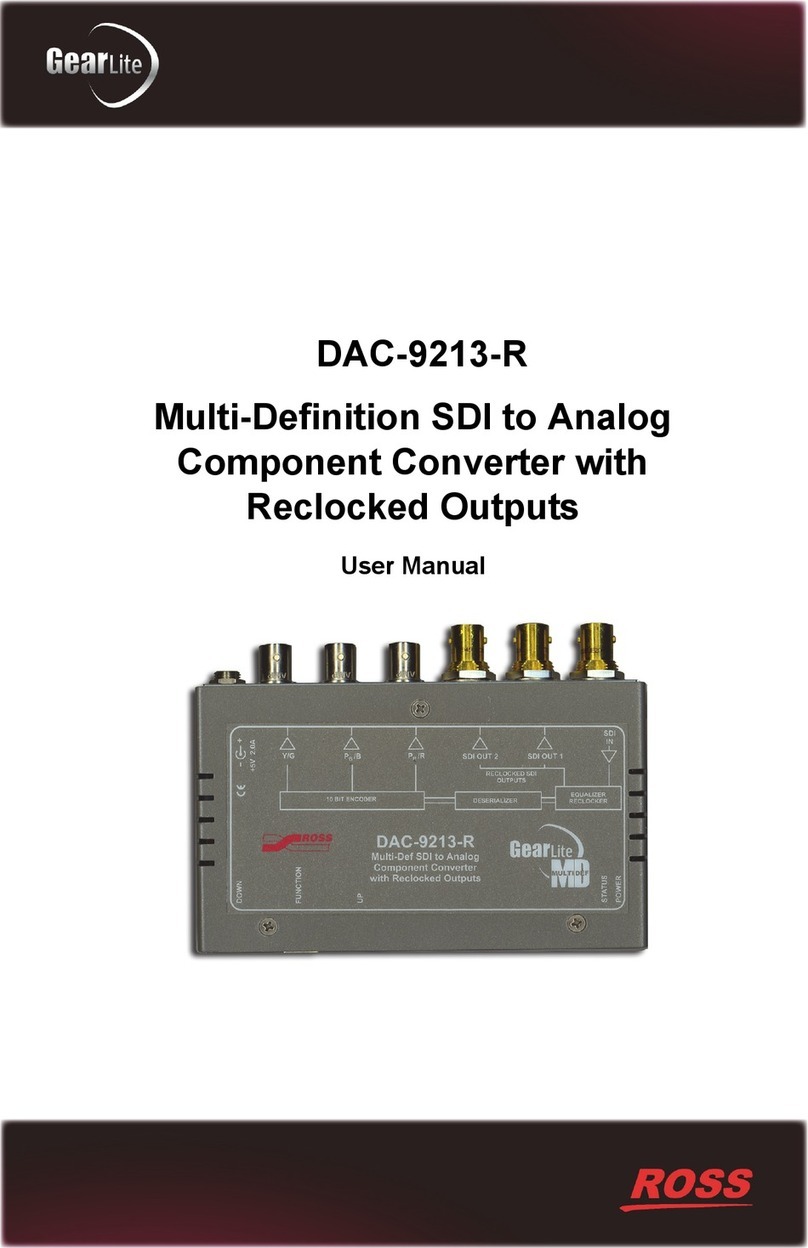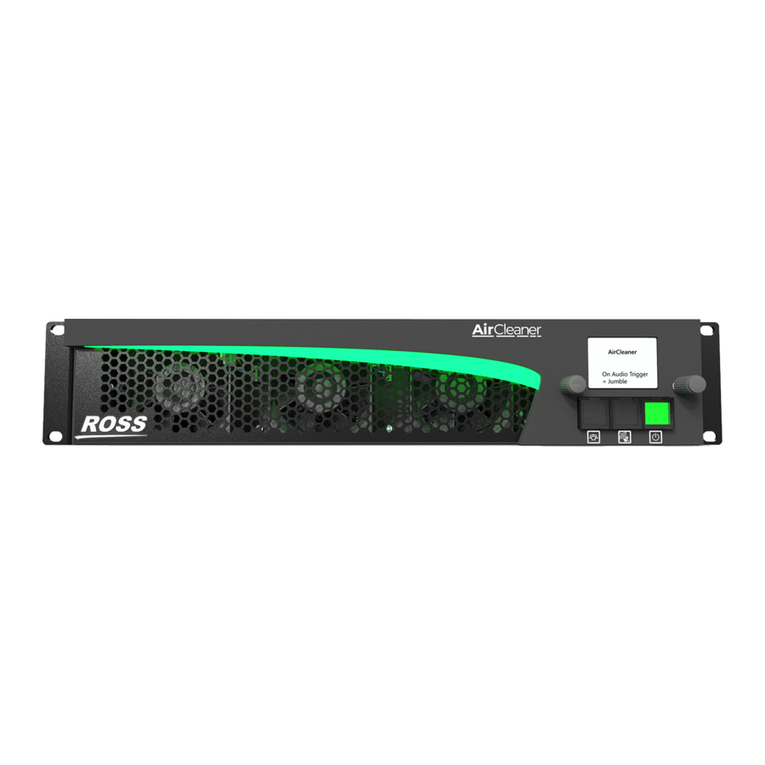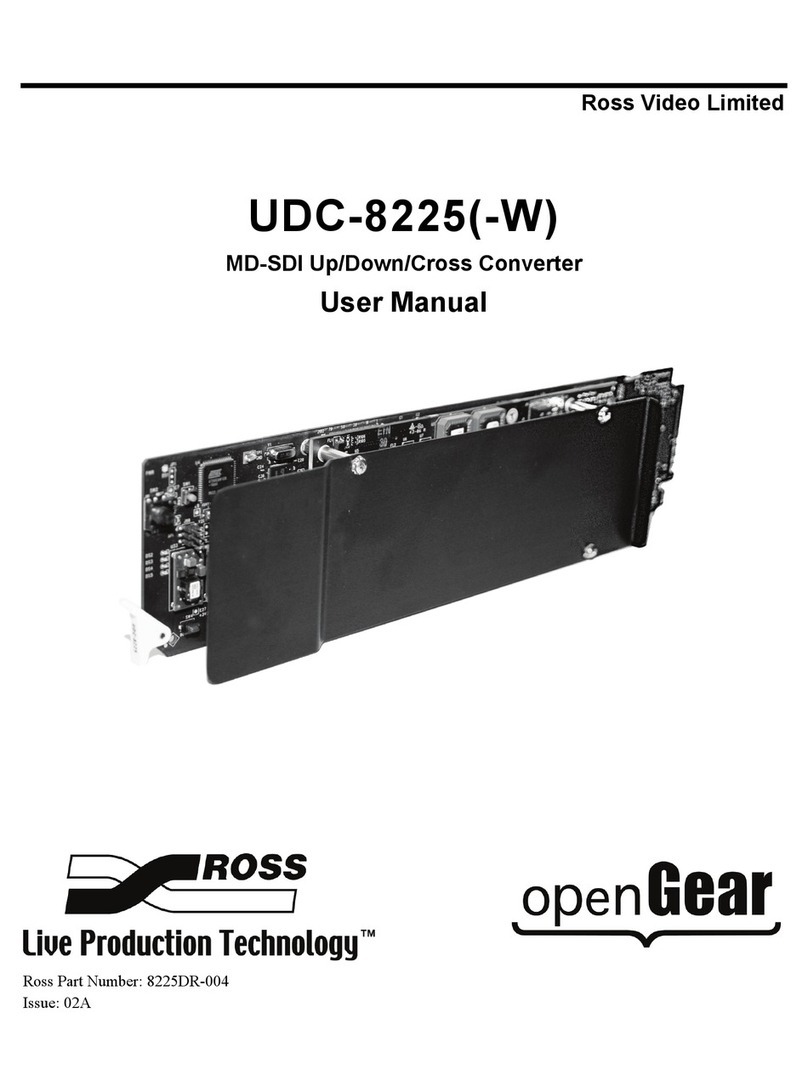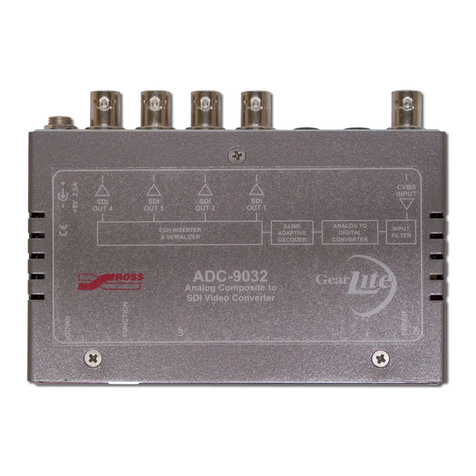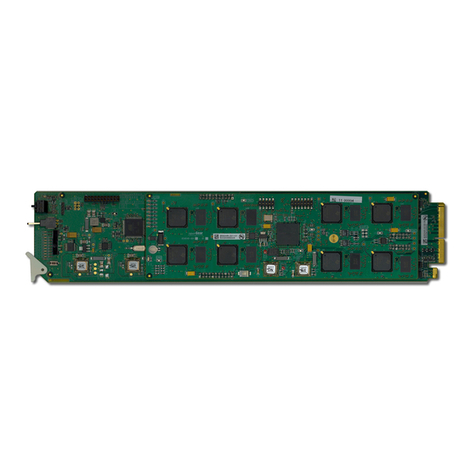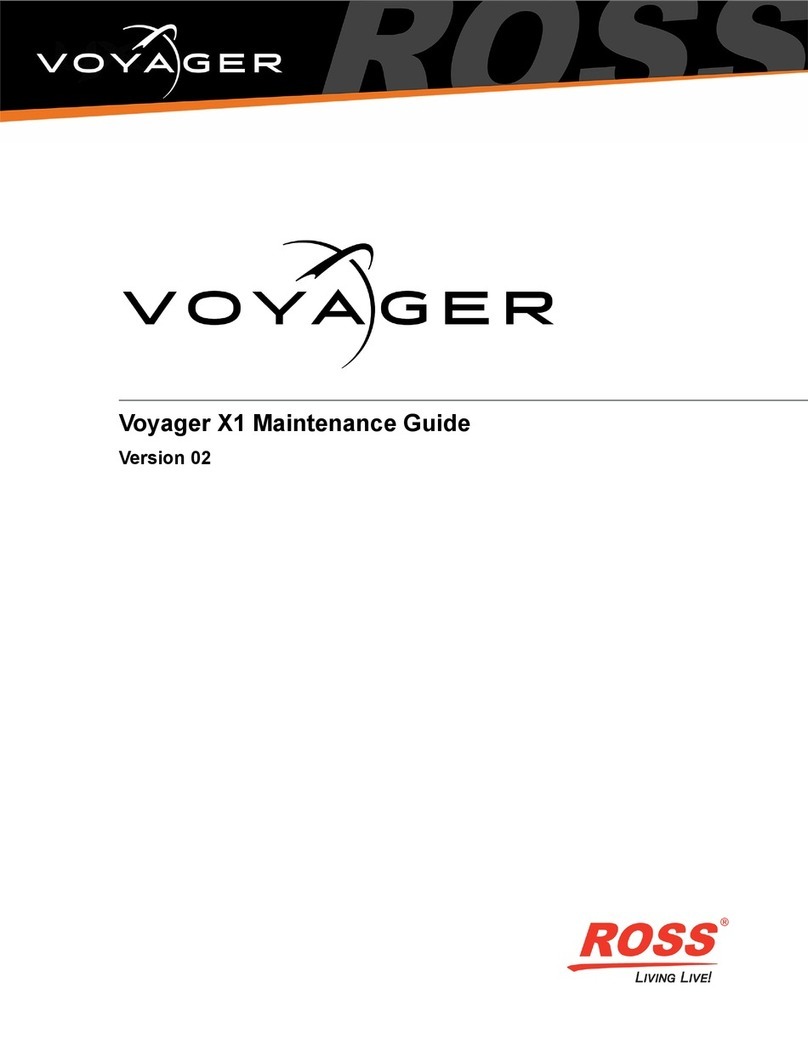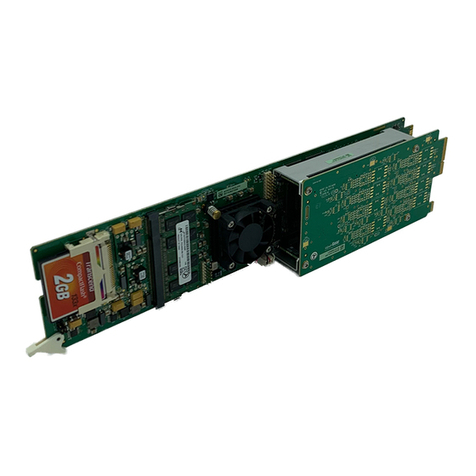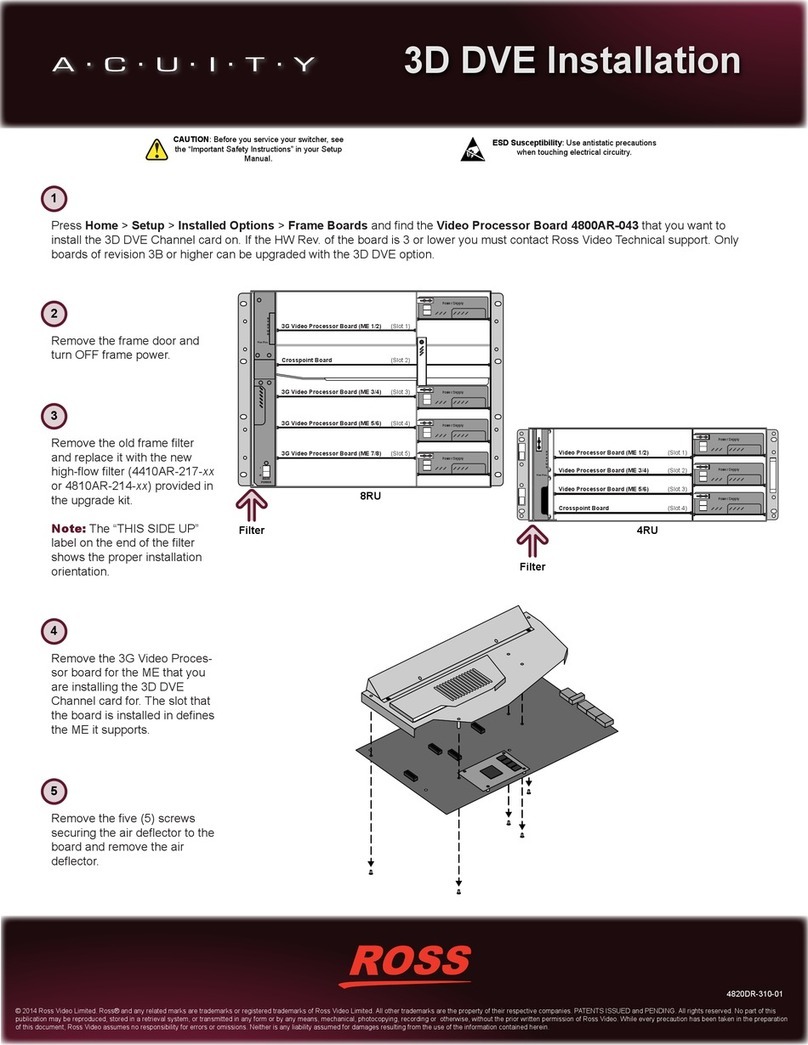
TES3 and TES5 Hardware User Manual (Iss. 03) Installation • 3–3
3. Install four nut clips to the rear of the rack at the same height as those used to mount the
front of the TES.
4. Attach the two rear rack brackets (41-10544-01) to the nut clips installed in the
preceding step, using two 3/4” #10-32 screws for each bracket. Refer to Figure 3.1 for
locations. Before tightening the screws, ensure that these brackets contact the inner side
of the brackets mounted to the TES; that is, they should be closer to the center of the
rack than the ones on the TES. The slots in these brackets should also be approximately
aligned with the screw holes in the TES brackets.
5. Install two 3/8” #10 screws through the slots in each rear bracket into the captive nuts
near the rear end of the TES brackets. Refer to Figure 3.1 for locations.
6. Plug the power cord into the receptacle on the rear of the TES.
7. Insert a tie-wrap through the strain relief bridge on the rack bracket near the TES power
entry module; refer to Figure 3.1 for locations. Pass the tie-wrap around the power cord
and tighten it to prevent the power cord from being inadvertently pulled out of the TES.
8. Insert the TES power plug into a 110 or 220 VAC outlet. The use of conditioned power
from an uninterrupted power source (UPS) is strongly recommended, in order to ensure
that the processing of the video and VBI data is not disturbed by power outages.
9. Most uses of the TES require connecting a video input to the PROGRAM IN jack, and
connecting the PROGRAM OUT jack to another piece of equipment that uses the
video. It is essential to always use high-quality coaxial cable with 75ohm BNC plugs for
these connections. In particular, SDI video connections require digital video cable such
as Belden type 8281.
10. Most applications also require connection of one or more data ports (RS232, LAN or
modem). Please note the following points related to the RS-232 ports A, B and C:
• When connecting to another device such as a PC that is wired as Data Terminal
Equipment (DTE), you need to use a null modem cable such as the one supplied
with the TES. Additional cables can be purchased by contacting your Ross Video
sales representative. Alternatively, you can build your own cable or find an
equivalent one available from a cable supplier, using the wiring table provided in
the section “Cabling Information” on page 5-5.
• When connecting to a device that is wired as Data Communications Equipment
(DCE), such as a modem, you need to use a “straight-through” 9-pin cable instead
of the null-modem. This cable is not supplied with the TES3 or TES5, but is readily
available from data cable suppliers.
• Although you will use PORT A for your initial setup, you do not have to dedicate it
to this purpose alone. If you enable setup to occur through the LAN, PORT A is
then available for data transmission. Also, PORT A can be used alternately for
setup and data transmission, provided your application allows the data transmission
to be suspended whenever you need to change the setup.
11. Consult the user manual for the software which was supplied with the unit for further
installation and setup instructions.


















